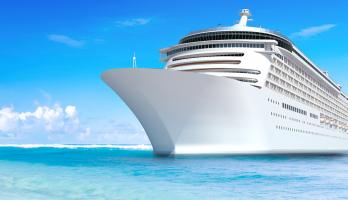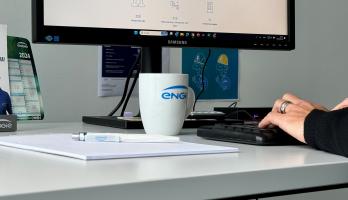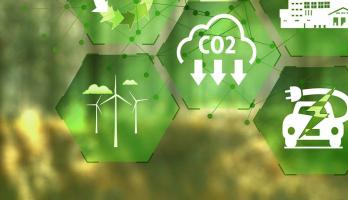Central refrigeration supply thanks to QUANTUM
Save energy with intelligent engineering!
With the quantity of electricity saved, around 800 households can be supplied with 4,000 kWh of electricity each year and with the quantity of gas saved with 15,000 kWh of gas each year.
Around 3,000 tons of CO2 equivalent emissions are also avoided.
In 2015, Ecoform Multifol Verpackungsfolien GmbH & Co. KG asked Duschl Ingenieure to design the new refrigeration supply for its business. For several years, the refrigeration centre has contained two water-cooled QUANTUM chillers with magnetic-bearing turbo compressors.
Before: Locally deployed machines impair production
Initial situation: Each of the production machines and air-conditioning systems at Ecoform Multifol Verpackungsfolien GmbH & Co. KG was supplied by its own local chiller. These chillers were located by the respective refrigeration consumers in the access-restricted production area. Several of the chillers had already reached the end of their service life, and some had even exceeded it. The localised system had several drawbacks: production had to shut down during maintenance and repair of the chiller. The alternative was to expend a huge amount of effort to obtain a replacement refrigeration system. In addition, new refrigeration consumers were planned. A whole new concept was required to implement the necessary refrigeration supply of approx. 3 megawatts. The company asked Duschl Ingenieure, a company based in Rosenheim, to draw up this concept.
From local to central refrigeration supply
The first result of the extensive research: instead of multiple locally deployed chillers, the company should switch to a refrigeration centre with a distribution network. In the new system, the two new QUANTUM chillers are kept in a refrigeration centre outside the production area, which means that maintenance and repairs can be performed outside the production area. And the new system also creates additional space in the production area. There were other important reasons for choosing a central refrigeration supply, including energy efficiency and the effects on the environment. A central refrigeration system allows multiple smaller machines to be replaced by a few large ones, and makes it possible to use more efficient models with more eco-friendly refrigerants. Free cooling and heat recovery are also easier to implement centrally. This results in major energy savings when providing cold and heat.
Central refrigeration supply: eco-friendly and energy-efficient
The new refrigeration system has a generation capacity of 2,920 kW, which is split between the two technologically identical chillers from ENGIE Refrigeration. Each of these runs with four oil-free turbo compressors. The two chillers are operated with the eco-friendly refrigerant R1234ze, which has low greenhouse gas emissions. They supply various production machines with cold, among them cooling batteries, ventilation systems, foil extrusion machines, control cabinets and forced-air cooling devices.
Optimised technology for maximum energy efficiency
Recooling is performed either via heat recovery or via four dry recoolers with 14 individual fans each. In this design, they have a total capacity of 4,200 kW. Individual cooling towers can be separated from the system to ensure efficient partial-load operation. It is possible to uncouple up to 1,500 kW with a temperature level of no more than 50 Celsius from the recooling network for heat recovery. Fundamentally, this refrigeration system is designed so that, when the seasons change, one chiller can run in heat recovery mode while the other chiller and any series-connected free cooling can discharge the exhaust heat into the environment. To summarise, all parameters were optimised across the system for high energy efficiency without compromising the production process. This was possible because all the partners worked exceptionally well together.
Save around 3,000 tons of emissions
Duschl Ingenieure was also asked to provide the detailed design for the system. Planning was performed with the help of a 3D model that was, among other things, also capable of including the necessary maintenance areas. The central refrigeration system has been running since 2017. Between December 2017 and November 2018 it consumed around 890 MWh of current and provided 5,680 MWh of refrigeration via the distribution network. That is an overall performance factor of 6.4. It should be noted that, according to the DWD (German weather service), 2018 was the hottest year since records began in 1881. In future, this system will provide around 10,500 MWh of cold and around 5,600 MWh of heat from heat recovery per year. With these power savings, it would be possible to provide around 800 households with 4,000 kWh of electricity each year; and the gas savings mean each of these households could be supplied with 15,000 kWh of gas every year. The system also reduces CO2 equivalent emissions by around 3,000 tons.
Overall, the project shows that with intelligent engineering and the relevant expertise, it does not cost much to save a lot of energy and ensure a reliable refrigeration capacity.
This article was written by ENGIE Refrigeration in cooperation with Duschl Ingenieure.









